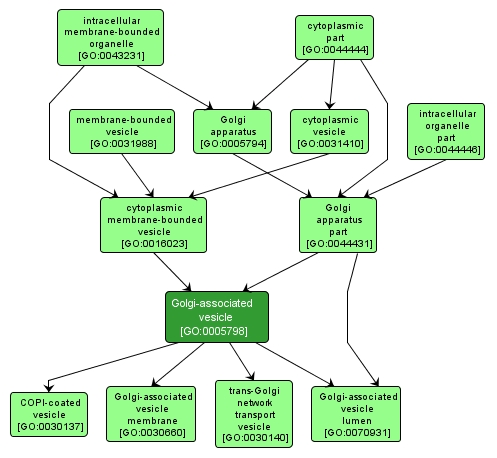GO TERM SUMMARY
|
| Name: |
Golgi-associated vesicle |
| Acc: |
GO:0005798 |
| Aspect: |
Cellular Component |
| Desc: |
Any vesicle associated with the Golgi complex and involved in mediating transport within the Golgi or between the Golgi and other parts of the cell. |
| Synonyms:
|
|

|
INTERACTIVE GO GRAPH
|














